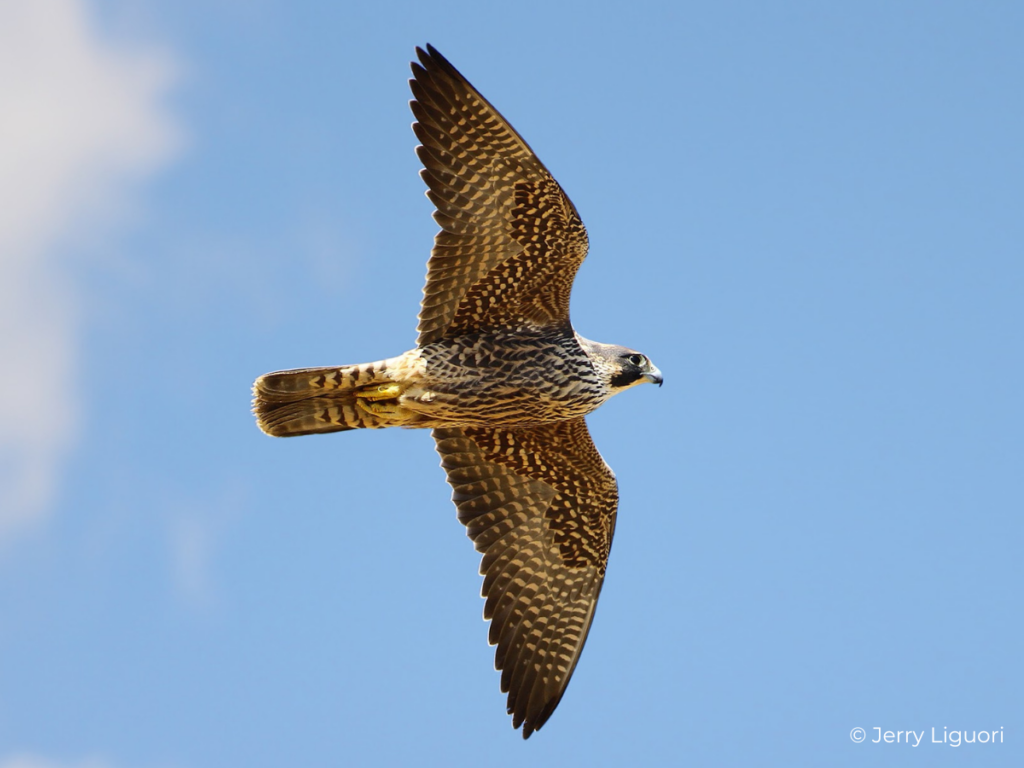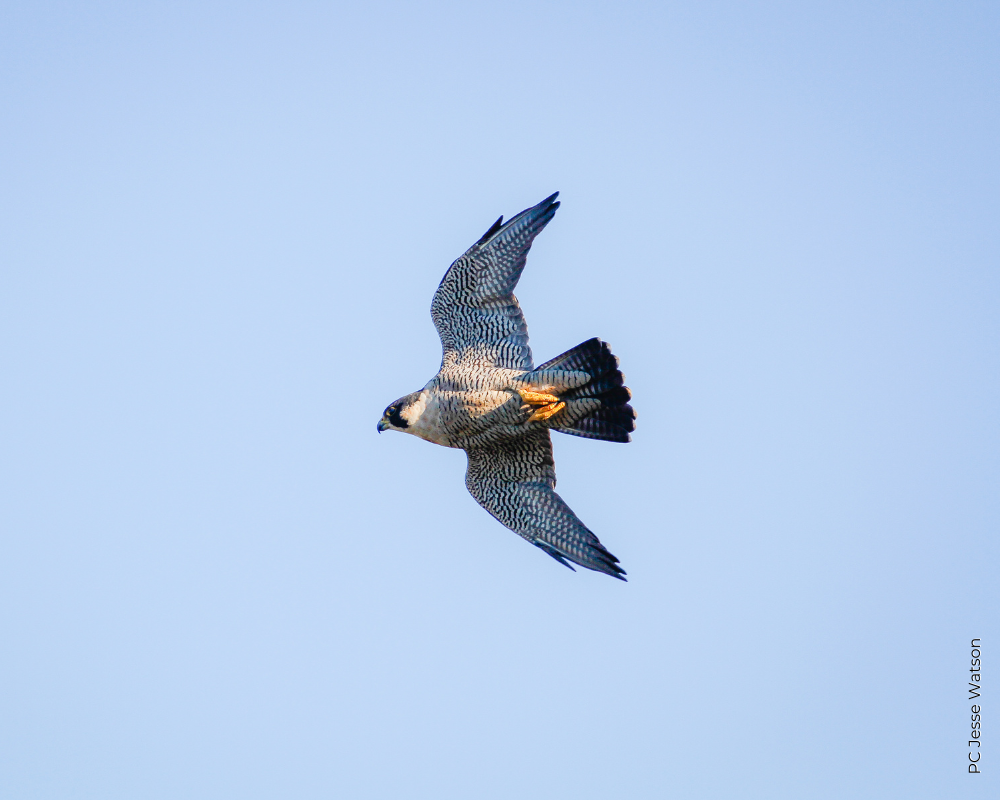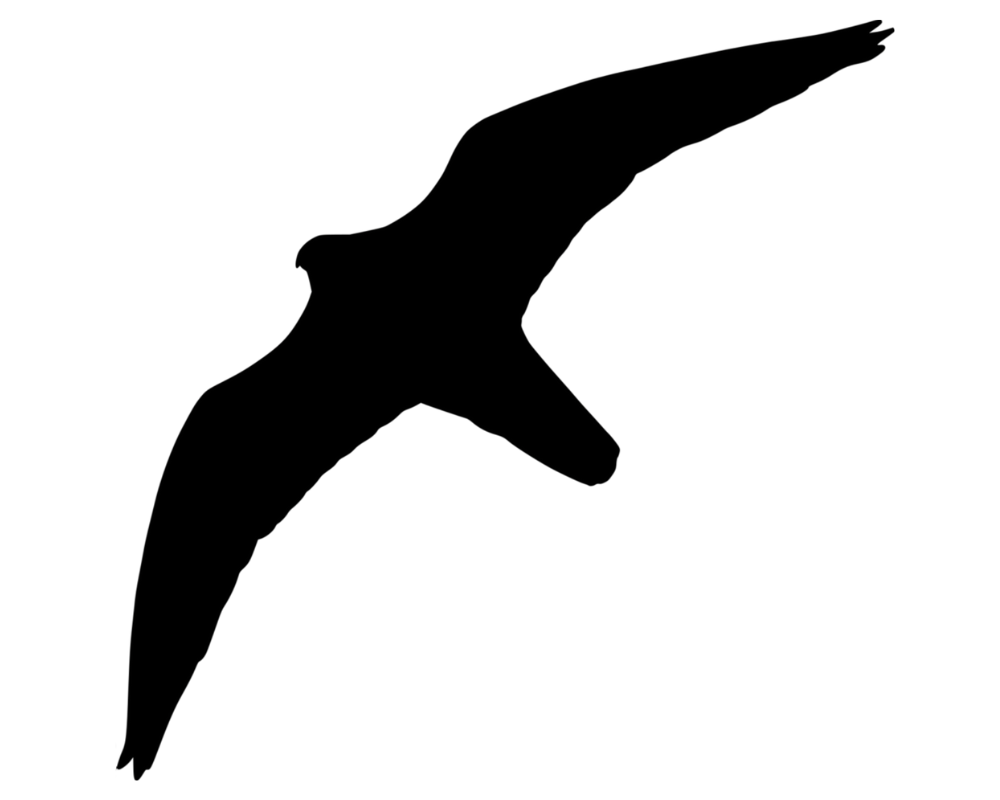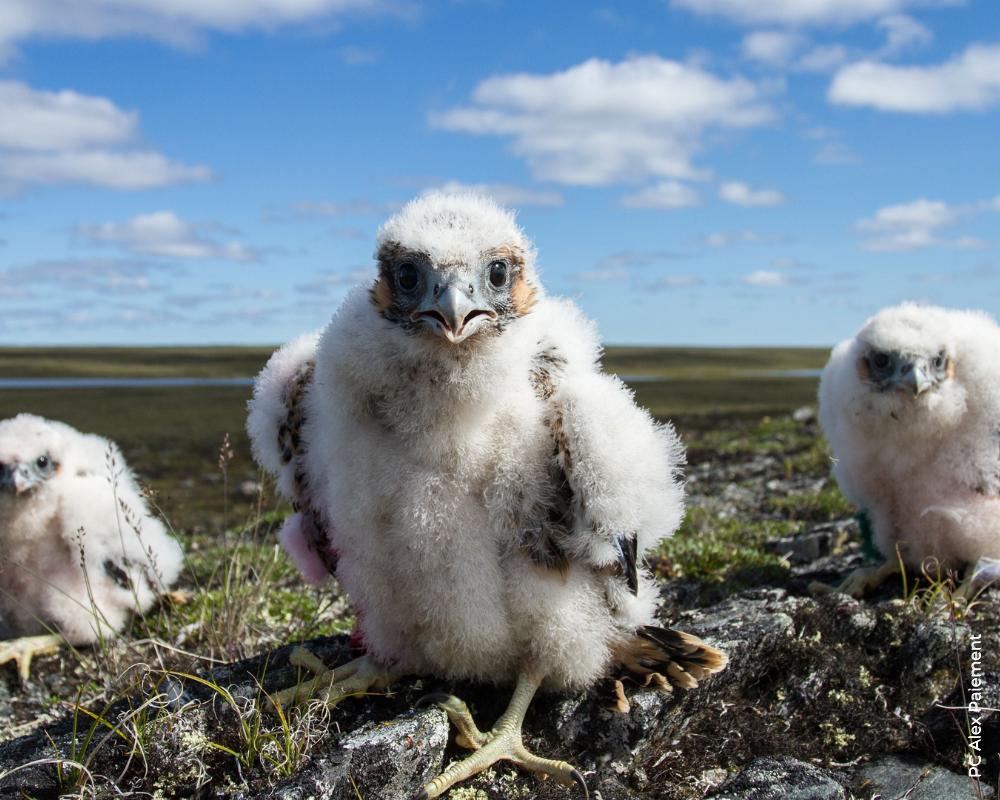Overview
The Peregrine Falcon is a large, powerful, lightning-fast falcon found in various cliff habitats, marshes, and open areas across North America. Once nearly gone across part of its range, it has rebounded in recent decades, now occupying urban areas where it nests on building ledges, bridges, and man-made structures, especially boxes erected in areas of the U.S. specifically for them. Peregrines still use cliffs to nest on where available in the West and parts of the Northeast but seem to be as common on man-made structures these days.
The Peregrine is a bird-hunting specialist preying on shorebirds, waterfowl, and pigeons (in urban areas), but will snag any bird not too large if given the chance. On numerous occasions, they have even been seen taking smaller raptors right out of the sky! Peregrines hunt mainly via dramatic high-speed stoops, at times reaching speeds over 200 mph, earning it the title of “fastest animal on the planet.” They are also easily capable at chasing down speedy birds such as Bufflehead and Pintail in level flight. For obvious reasons, it is the favored bird among falconers. Peregrines often perch conspicuously on prominent overlooks, including power poles and buildings, and when agitated, give a loud, harsh, nasal “kak-kak-kak-kak…”
The Tundra race of Peregrine breeds across the Arctic throughout Alaska and Canada. It is the most widespread of the races. Tundra is generally a long-distance migrant, wintering sparingly in the United States but mainly in Central and South America and the Caribbean. The Anatum race breeds primarily in the continental West to Mexico, and many winter within their breeding range. Peale’s (which are slightly larger than the other races) is resident across the wet areas of the Pacific Northwest coast to the outer Aleutian Islands and is found sparingly throughout the West in winter. Still, some have been known to migrate all the way to the East Coast and down into Florida! However, through efforts in the 1970s & 80s when the Peregrine population was diminishing (mostly in the eastern U.S.), birds of European descent, falconry birds of mixed decent, and heavily marked birds of unknown origin were introduced into the East, making it impossible to ID some Peregrines to subspecies in certain areas. Females are distinctly larger than males, the biggest birds approaching the size of male Gyrfalcon.




